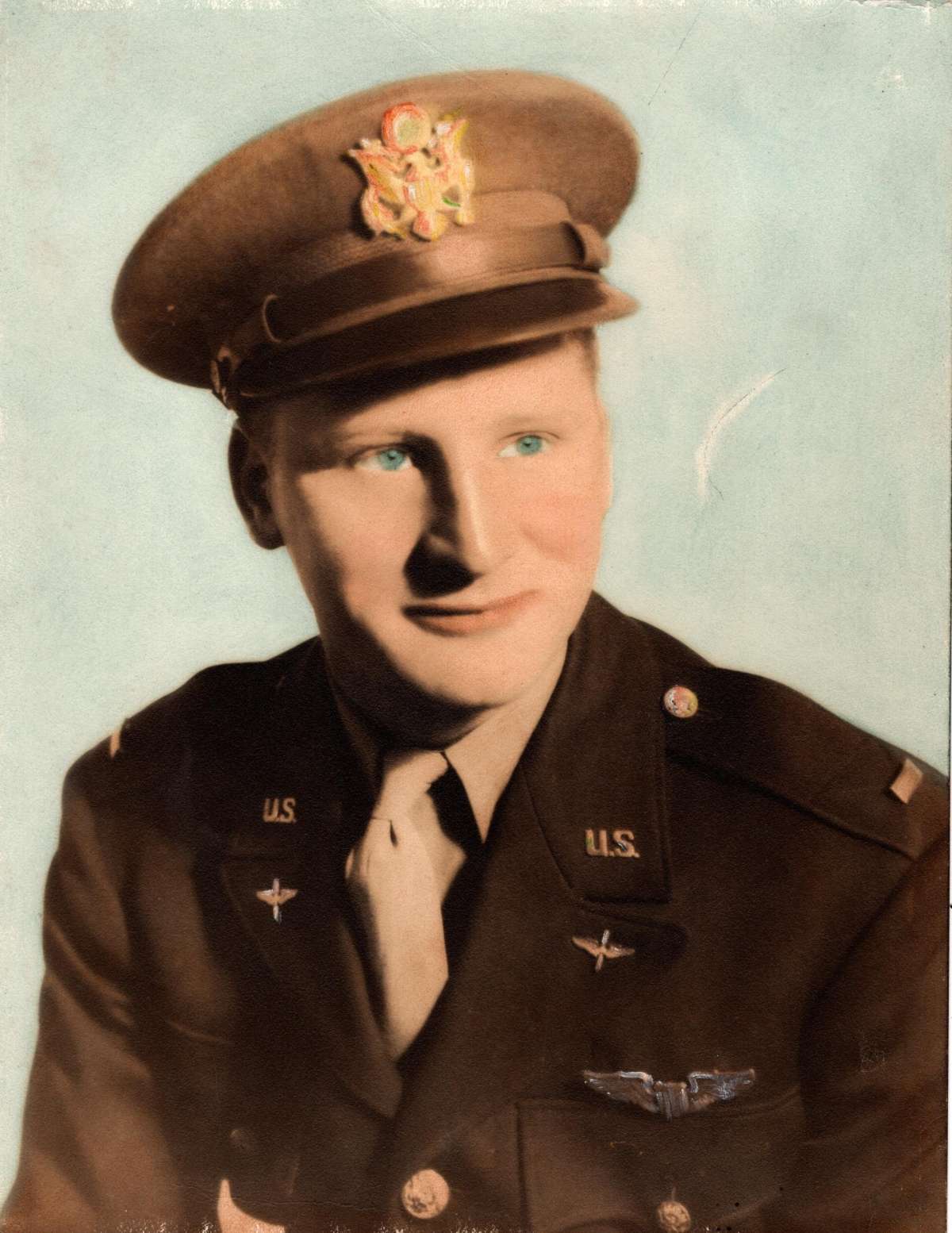Biography
Year at ISU: 1935-1940
Died: San Francisco Bay, California
Howard Medin was born on December 2nd, 1917, in Algona, IA, the youngest of Rose and Samuel Medin’s four boys. He, like his three brothers, Carl, Kenneth, and Russell, loved sports, hunting, and fishing. He graduated from Algona High School in 1935. While at Algona High School he participated in football, wrestling, and track, was captain of the basketball team, and was secretary of his class. While playing football in high school Howard was given the nickname “Fido”. This stuck because others said he would rather run through someone on the field instead of around them. He was chosen as a quarterback on the North Central Conference first football team.
Howard’s father worked for the Algona cooperative creamery delivering milk. The manager of the creamery, Mads Christiansen, made it possible for the Medin brothers to go to college. Christiansen would pay for their schooling so long as they all majored in the dairy industry and repaid him by working at the creamery in the summers.
Howard followed his three brothers to Ames to Iowa State College, keeping true to his word he majored in dairy. While at Iowa State he was very active in social organizations and activities - participating in Football, Wrestling, Dairy Club, and the FarmHouse Fraternity. As a senior Howard served as Secretary of the Farmhouse Fraternity, won a major “I” letter in football, and was a starter on the team. His picture, name, and number were displayed on posters advertising Iowa State football games, a great honor for an athlete. He graduated in June of 1940, receiving a BS in Agriculture.
After graduating Iowa State Howard went to work for the milk plant at the University of Iowa in Iowa City. About two years later after the start of World War II he enlisted in the Army air corps on January 28th, 1942, in Fort Des Moines, Iowa. He was 24 years old. He trained at Rankin Aeronautical Academy in Tulare, CA, Air Corps Basic Flying School in Lemoore, CA, and Luke Field outside Phoenix, AZ. He graduated Tuesday, September 29th, 1942, from the Air Force Advanced Flying School, Luke Field, Arizona. He was assigned to a P-39 Airacobra plane. He was a pilot in the 327th Fighter Squadron and was stationed at Mills Field in California to “ready for foreign service”. While in the army Howard was given the new nickname “Homer” by his fellow pilots.
On December 30th, 1942, Howard was flying in a two-plane routine formation flight. While about to land at Mills Field the other plane in his formation witnessed Howard’s plane enter a steep spiral dive and crash into San Francisco Bay. This was either due to a mechanical failure or a loss of consciousness. Sea conditions were dangerous that day and a search and rescue operation could not be conducted. He was due to fly home the following day to see his family in Iowa for new year's. In the letter to his parents about his death his commanding officer said that Howard “displayed exceptional qualities of leadership and young American manhood.”
It is a little-known fact that 15,000 young men died in aircrew training in the U.S. during WWII. Aviation was barely out of its infancy during the 1940s. Civil aviation was far from safe and military aviation even less so. As war loomed, the U.S. dramatically ramped up aircraft production and aircrew training. Many new aircraft designs were rushed into production. Companies such as GM and Packard that had never produced planes or aircraft engines before were given huge contracts because they had the manufacturing capacity. The resulting retooling and production achievements were impressive but came at a cost. Many planes were put into use without proper testing, and in many cases even when design flaws were known, there was no time to investigate and take corrective action. Engine failures and on-board fires were common. But sadly, the war took precedence over safety as the US rushed to mount its defense.
The courage displayed by aircrews in combat over Germany and Japan, and the losses they sustained, is one of the most memorable stories of World War II. But it should not be forgotten that nearly 15,000 young men died in training accidents without ever leaving the United States. Although they never faced flak or Messerschmitts, their sacrifice was as real and memorable as those shot down over Germany.
